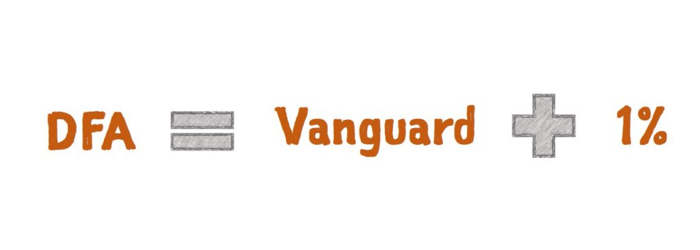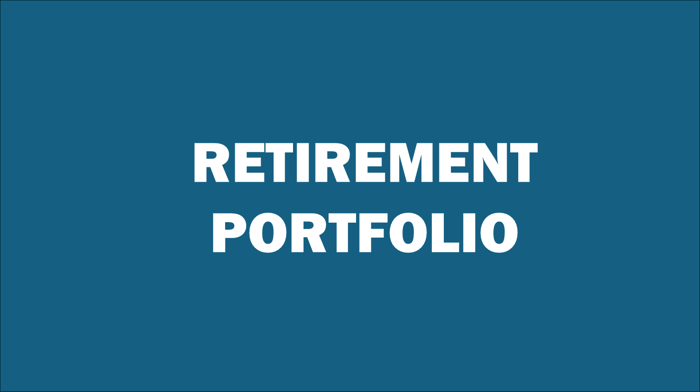I’ll never forget the train ride from Washington, DC to Stamford, CT when I was about 12 years old. My mother and I were on our way to spend Thanksgiving with my grandparents. For some reason, my mother started telling me about IRA’s and the power of tax-free compounding (Thanks, Mom!). Soon the conversation turned to Vanguard, her favorite mutual fund company. This was 1982 for goodness sakes. It turns out my mother was on to something!
FAST FORWARD 14 YEARS….
It was a beautiful spring day in Palo Alto, CA in 1996. I was sitting in the second row of Bill Sharpe’s Modern Portfolio Theory course.
I found it riveting (I know, what a nerd).
But for me, it was one of those life-changing days that you never forget.
I certainly had heard of Vanguard (after all, my mother had introduced me to the company years earlier). But I didn’t fully appreciate the true power of passive investing, and therefore what a truly wondrous company Vanguard is for the individual investors.
THE POWER OF PASSIVE INVESTING
Professor Sharpe fully opened my eyes to the power of passive investing, and to the power of Vanguard. You see, Vanguard is the undisputed leader in passive investing, and has been ever since the term was invented back in the ’70s.
Passive investing basically means trying to earn market returns by matching the market, whereas active investing means trying to beat the market by picking individual stocks. On its surface, passive doesn’t sound very inspiring (who wants to be average?), but it turns out that passive investing beats 80% of actively managed funds.
This happens because of two main benefits of passive investing – low costs and tax efficiency. When you add up these benefits, it turns out that passive investing, and therefore Vanguard, beats 80% of actively managed funds. Often times, Vanguard beats most actively managed funds because these funds are so expensive to operate and less tax efficient.
A SIMPLE VANGUARD FUND PORTFOLIO
To make this as real and practical as I can, I’m going to share a simple yet powerful portfolio from Vanguard with you.
Although this portfolio is designed to be simple, don’t be fooled. It is a terrific portfolio, that delivers on the promise of passive investing, and leaves most alternative portfolios in its wake.
As you can see, the portfolio diagram above captures the entire world stock market in just a few funds. They do it this way to minimize costs. It’s very simple… it might even appear to be too simple.
But is this really the best Vanguard can do? Is building a portfolio on the basis of cost alone the best we have?
The obvious question becomes….is there any way we can expect to do any better?
The answer is, yes actually, we can.
THREE PROVEN ANOMALIES
Investors, analysts, and researchers are constantly looking for an edge that they can exploit to their advantage. In fact, over the years researchers have found 313 “factors” or “anomalies” that they believe help explain stocks with higher returns.
Now don’t worry, we don’t have to look for all 313, most of these factors actually fail under further investigation. But it turns out that 3 of these 313 factors stand up to rigorous scrutiny.
Leading academics, some of whom are actual Nobel laureates, have been responsible for isolating these 3 characteristics of stocks with higher expected returns.
So what are they?
- Small cap stocks tend to outperform large-cap stocks
- Value stocks tend to outperform growth stocks
- Stocks of more profitable companies tend to outperform stocks of less profitable companies

Basically, this means that if you can create a passive portfolio that incorporates these 3 characteristics of higher expected return, you should be able to boost your overall portfolio return.
TILTING YOUR WAY TO GREATNESS
What’s awesome is that with a little bit of work you can actually “tilt” your Vanguard portfolio toward two dimensions of higher expected returns. This is great because you can use Vanguard to increase the expected return of your portfolio.
But what do I mean by tilting?
Well, a typical vanguard portfolio (like the one I show above), aims to match the market exactly as it is. This means it seeks to hold each stock in proportion to how much that stock makes up of the overall market.
On the other hand, tilting is when you over-weight or “hold more of” a certain portion of your portfolio.
For example, under normal conditions, you might hold small-cap stocks as 15% of your portfolio because small caps represent 15% of the overall market size. But if you decide to “tilt” towards small-cap, you might increase this holding to 25% and decrease the amount of large-cap stocks you hold.
Here’s our simple Vanguard portfolio again, but this time “tilted” toward Small and Value stocks.
You may notice that we’ve only included 2 tilts: Small & Value. We didn’t include a Profitability tilt because Vanguard doesn’t have a fund that offers that.
Which brings me to a couple of short-comings of my (now second) favorite mutual fund company.
VANGUARD’S HANDS ARE TIED
Vanguard’s amazing ability to deliver extremely low-cost investment products lies in both its scale (over $2 Trillion in assets) and in its devotion to delivering benchmark returns. Vanguard’s index funds, in other words, each try to precisely deliver the returns of their associated benchmark.
Which is great, but it turns out there are a couple challenges with this.
First, Vanguard (and any index fund provider) ends up making unprofitable trades when its benchmark changes.
Let me explain.
Over time changes in the benchmark will occur. For example, the S&P 500 includes the top 500 companies in the United States. As you can imagine, those bottom 50 companies can change on a fairly regular basis as some companies grow and others shrink.
When this happens, an S&P 500 index fund needs to immediately change its holdings in order to continually match its benchmark. This means Vanguard must sell stocks when companies leave the index and buy stocks when other companies join.
The problem is that this forces Vanguard to make trades based on when the benchmark changes, instead of making trades based on when it makes sense from a profit standpoint.
In other words, these trades often come at a cost to the investors, because Vanguard is not allowed to wait until the most opportune time to make trades.
Second, the only way to “tilt” a Vanguard portfolio is to own more of the given benchmark fund you’d like to tilt toward. This brings added complexity to your portfolio, and if not managed well, can cost you money.
The bottom line is that Vanguard, while great, is a slave to the benchmark. It cannot deviate based on academic research because its philosophy is based on seeking market returns.
ENTER DIMENSIONAL
It turns out there’s another passive mutual fund company out there, but one that isn’t a slave to delivering benchmark returns.
And you might have guessed it, Dimensional Fund Advisors (DFA) is now my favorite mutual fund company. (If you haven’t heard of them, it’s because they only work with institutional clients and a handful of investment advisors.)
While Vanguard is the undisputed King of Cost-Based passive investing, DFA is the undisputed king of Evidence-Based (or Research-Based) passive investing.
DFA embraces most of what Vanguard embraces – costs matter, diversification matters, and tax efficiency matters.
The one big difference is that DFA is much more free to structure all their funds around the 3 dimensions of higher expected return.
In other words, a DFA portfolio is able to tilt more easily towards these 3 dimensions than a comparable Vanguard portfolio can, while still maintaining a low-cost portfolio.
If tilting your portfolio toward dimensions of higher expected returns is like giving your portfolio a jolt of caffeine, Vanguard is like a cup coffee, while DFA is like a double shot of espresso.
It’s the new and improved Vanguard.
MY NEW “PLUS 1”
When you examine DFA performance vs. Vanguard performance on a truly apples-to-apples basis, it turns out DFA has consistently outperformed Vanguard by about 1% per year.

Now, is there a guarantee that this will continue?
Certainly not.
Do all 3 of the dimensions of higher expected return always show up?
Nope.
But what’s comforting is that the 3 dimensions of higher expected return have been rigorously vetted. Which means they have shown up over time, across geographies, and across asset classes.
And even though it isn’t guaranteed, beating Vanguard consistently is no easy feat, considering Vanguard beats 80% of actively managed funds!
For these reasons, my favorite mutual fund company is now DFA. It’s the one I use for all my clients. And its the one I use for my own personal portfolio.
In fact, DFA is 100% consistent with my broader vision for what constitutes a truly evidence-based wealth management practice.
I STILL LOVE YOU, VANGUARD
I still love Vanguard, and presumably always will. They are a terrific answer, especially for individual investors not working with an advisor. (DFA is only available through advisors, which gives it a further performance advantage).
But if you are working with an advisor who doesn’t have you in DFA, ask them why not. And then pay close attention to their answer.
If you’re interested in how I completely personalize a DFA portfolio for each of my clients, download my complimentary report 7 Steps to a Personalized Portfolio.
And if you’re ready to talk about how I would use DFA in your specific portfolio, I encourage you to set up a complimentary call with me.






